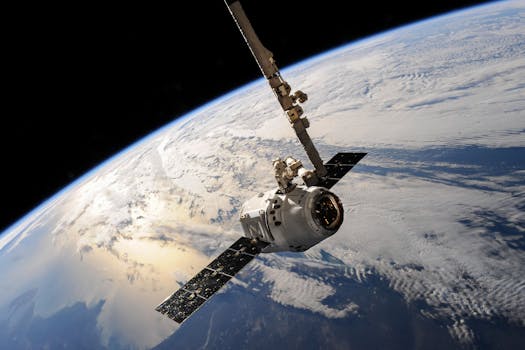Future of Satellites: Revolutionizing Global Connectivity
The future of satellites is poised to revolutionize global connectivity, enabling faster and more reliable communication services. With advancements in space technology, satellites are becoming increasingly important for a wide range of applications, from navigation and remote sensing to communication and scientific research.

Future of Satellites: Revolutionizing Global Connectivity
Future of Satellites is rapidly evolving, enabling faster and more reliable communication services. With advancements in space technology, satellites are becoming increasingly important for a wide range of applications, from navigation and remote sensing to communication and scientific research. The use of satellites has become an essential part of modern life, and their impact is expected to grow exponentially in the coming years.
The future of satellites holds great promise, with new technologies and innovations being developed to improve their performance, efficiency, and affordability. One of the key trends in the satellite industry is the development of small satellites, also known as smallsats. These satellites are smaller, lighter, and less expensive than traditional satellites, making them more accessible to a wider range of organizations and countries.
Advancements in Space Technology
Advancements in space technology are driving the growth of the satellite industry. New materials and manufacturing techniques are being developed to create more efficient and powerful satellites. For example, the use of advanced composites and 3D printing is enabling the creation of lighter and more complex satellite structures. Additionally, the development of new propulsion systems, such as electric propulsion, is improving the maneuverability and lifespan of satellites.
Another significant advancement in space technology is the development of reusable rockets. Companies such as SpaceX and Blue Origin are leading the charge in this area, with their reusable rockets capable of launching satellites and other spacecraft into orbit at a significantly lower cost than traditional rockets. This is expected to make space travel more accessible and affordable, enabling more organizations and countries to participate in the satellite industry.
Applications of Satellites
Satellites have a wide range of applications, from navigation and remote sensing to communication and scientific research. Navigation satellites, such as GPS, provide location information and timing signals to GPS receivers on the ground, enabling accurate navigation and tracking. Remote sensing satellites, such as Landsat and MODIS, collect data on the Earth’s surface, enabling scientists to study climate change, monitor crop health, and track natural disasters.
Communication satellites, such as geostationary satellites, provide television broadcasting, telecommunications, and internet connectivity to remote and underserved areas. Scientific research satellites, such as the Hubble Space Telescope, enable scientists to study the universe, from the formation of stars and galaxies to the search for extraterrestrial life.
Challenges and Opportunities
Despite the many benefits and opportunities presented by satellites, there are also challenges and risks associated with their use. One of the significant challenges is the increasing amount of space debris in Earth’s orbit, which poses a risk to operational satellites and other spacecraft. Additionally, the use of satellites for military and surveillance purposes raises concerns about privacy and security.
However, the opportunities presented by satellites far outweigh the challenges. Satellites have the potential to provide global connectivity, enabling people in remote and underserved areas to access the internet, communicate with others, and participate in the global economy. They also enable scientists to study the universe, monitor climate change, and track natural disasters, providing valuable insights and data to inform decision-making.






